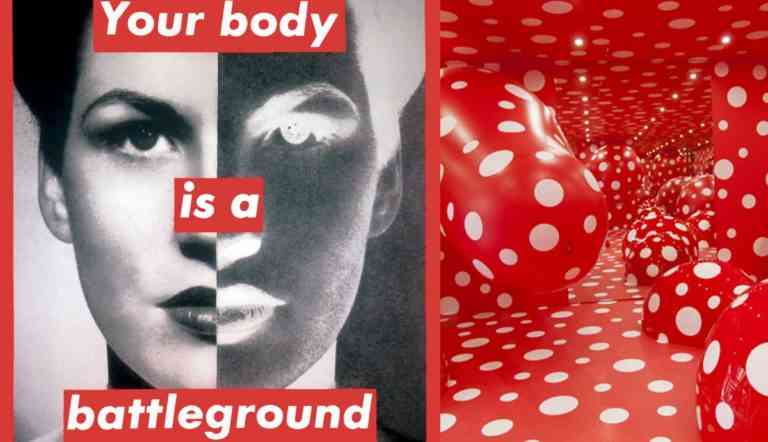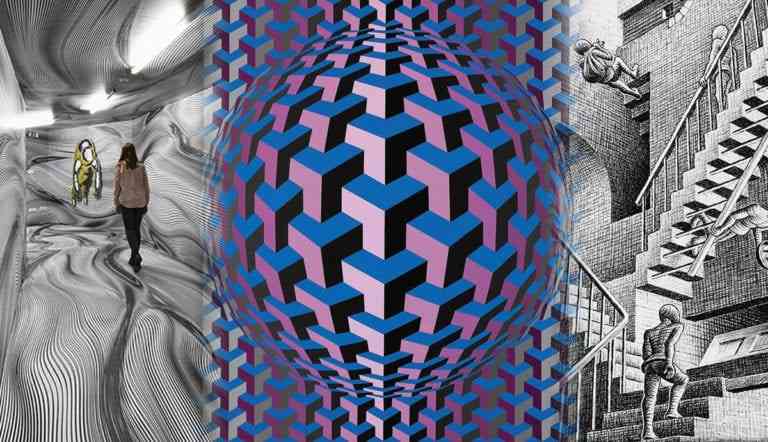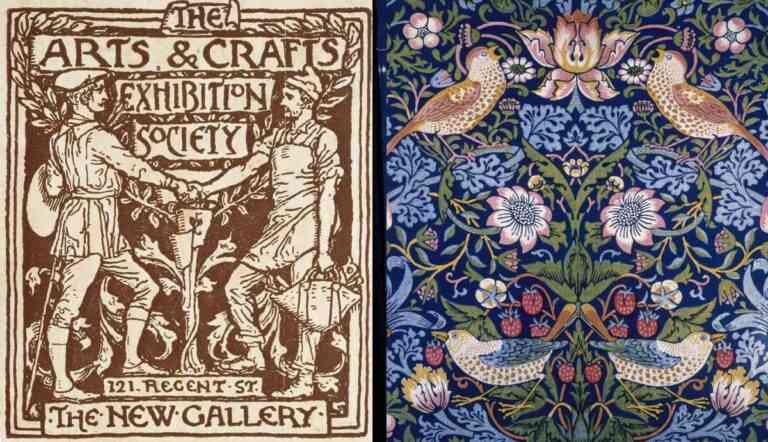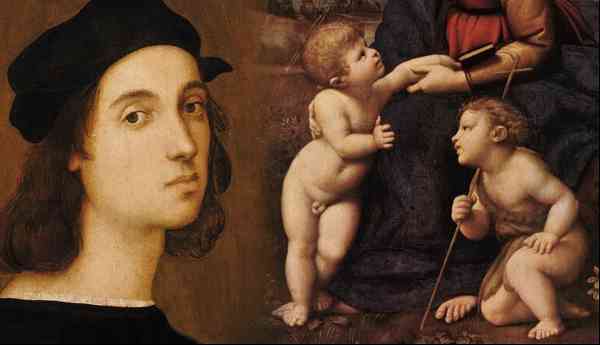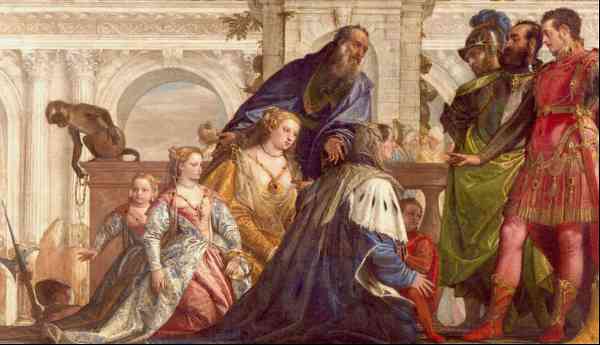
The Monuments Men and Women were an intrepid group of art experts who played a profound, significant role during World War II. They rescued hundreds of thousands of world-renowned, priceless artworks and artefacts that were stolen by the Nazis and returned them to their rightful owners. Without their efforts, many of the world’s rarest works of art could have been lost or destroyed. Sadly, not all the looted items were uncovered, many are still missing today.
However, the Monuments Men and Women Foundation is dedicated to the pursuit of these valuable objects. To publicize the search, the Foundation has produced a handy deck of WWII MOST WANTED ART™ playing cards outlining some of the most historically significant works of art whose locations are still unknown, along with rewards of up to $25,000 for anyone who can help find them. We have rounded up the most wanted artworks and artefacts from each hand in the deck to find out more.
Raphael, Mondrian, Breughel, Dürer and Cranach

The spades suit features a series of artworks by renowned artists throughout art history, ranging from the Renaissance masters Raphael, Jan Breughel the Elder, Paolo Veronese, Albrecht Dürer and Lucas Cranach, to the modernist pioneers Piet Mondrian, Egon Schiele and Paul Klee. Below, we list the top trump cards from the spades suit, with rewards ranging from $2,500 to $25,000. The full suit is available to view at the Monuments Men and Women Foundation website.
1. Raphael, Portrait of a Young Man, 1513-14 (Reward up to $25,000)

Raphael’s Portrait of a Young Man 1513-1514, is one of the most important paintings to go astray during World War II, and its whereabouts continue to be a top priority for the Monuments Men and Women Foundation. Along with Leonardo Da Vinci’s Lady with an Ermine (1489-1490) and Rembrandt’s Landscape with the Good Samaritan (1638) (both now in the Czartoryski Museum in Poland) Raphael’s masterpiece was purchased by Prince Adam Czartoryski as a trio of artworks that became known as ‘The Great Three.’ Raphael’s painting was evacuated by Hans Frank, Governor-General of Nazi-occupied Poland, to Lower Silesia where it was last seen in a palace in Morawa in late January 1945.
Get the latest articles delivered to your inbox
Sign up to our Free Weekly Newsletter
2. Piet Mondrian, Painting No. 2, 1926, (Reward up to $20,000)

Dutch artist Piet Mondrian’s Painting No. 2, (1926), was seized by Nazis from the private collection of German art historian, collector and author Sophie Lissitzky-Küppers (nee Schneider) as part of the so-called ‘degenerate art’ campaign, along with numerous masterpieces by leading 20th century modernist artists. The Nazis confiscated this artwork while it was on loan to the Provincial Museum in Hanover, now the State Museum in Hanover, in 1937. From there, the painting was then placed for sale with German art dealer Karl Buchholz, who sent it to his business associate Curt Valentin in New York.
3. Jan Breughel the Elder, A Garland of Flowers Surrounding a Picture of Flora, 16th century (Reward up to $15,000)

Breughel’s 16th-century masterwork A Garland of Flowers Surrounding a Picture of Flora belonged to German art historian, dealer and collector Dr. Max Stern during the World War II era. Under significant pressure from the Nazis, the collector was forced to sell the painting in 1937, along with 228 works of art, and the family gallery business, Galerie Stern, the profits of which were seized by the Reich as a compulsory payment. This painting made several reappearances on the art market following the end of the war, once during a Christie, Manson & Woods Ltd. sale in London in 1952, and twice in 1966, during a Sotheby’s auction in London, and a sale at Leger Galleries in London, although it has not been seen since then, despite Stern’s attempts to reclaim his former collection.
4. Albrecht Dürer, A Lying Lioness, 15th to 16th century (Reward up to $10,000)

Once housed in the Print Room at the University of Warsaw Library, Albrecht Dürer’s drawing on paper titled A Lying Lioness was moved to the Academy of Fine Arts in St Petersburg during the November Uprising of 1831. In 1923, during the Treaty of Riga, the drawing returned to the Warsaw University Collection. The drawing was seized in 1939 during the September Campaign along with many thousands of prints and drawings in the esteemed collection. Many of these were burned by Nazis in the Krasinski Library Building as part of an attempt to wipe out Warsaw’s cultural heritage. The entire operation to destroy Warsaw’s art collections was led by Austrian art historian and SS officer Kajetan Mühlmann. It is believed that Mühlmann personally took this drawing by Dürer, but its whereabouts since then have remained a mystery.
5. Lucas Cranach the Elder, Saint George, 1525 (Reward up to $7,500)

Cranach’s small painting of Saint George formerly resided in the Anhalt Picture Gallery of Dessau (Anhaltische Gemäldegalerie Dessau). When World War II broke out, the painting was moved for safekeeping to the forester’s lodge Uhlenstein in Germany most likely in the latter half of 1942. Cranach’s painting was one of many small-scale artworks that were safely hidden in the remote villages of the Harz mountains, away from the larger cities which were under threat of being bombed or raided. Sadly, this painting disappeared from its repository which was left unattended in the closing days of the war.
Van Gogh, Caravaggio, Courbet, Monet and Rodin

The hearts card suit is equally as impressive, with examples from the Renaissance, Baroque, French Realist, Impressionist, Post Impressionist and Expressionist schools. Among the artists in the full suit are: Giovanni Francesco Barbieri Guercino, Michelangelo Merisi da Caravaggio, Gustave Courbet, Auguste Rodin, Edgar Degas, Claude Monet, Vincent van Gogh and Ernst Ludwig Kirchner. Below are the most historically significant and highly prized artworks.
6. Vincent Van Gogh, The Painter on the Way to Tarascon, 1888 (Reward up to $25,000)

This painting by Van Gogh belongs to the Kaiser Friedrich Museum in Magdeburg, Germany (now the Cultural History Museum Magdeburg). The painting miraculously escaped the Nazis ‘Degenerate Art’ campaign, remaining in Magdeburg when various other artworks were confiscated in 1937. However, the museum moved its remaining art collection to a salt mine in Stassfurt during British bombing attacks. In April 1945, following American invasions, two significant fires broke out in the salt mine, leaving their contents a pile of ashes. Many suspected the fires were a ruse to cover up the looting of the mines, particularly when other items formerly housed in these mines resurfaced after the war.
7. Caravaggio, Portrait of a Young Woman (Fillide Melandroni), 1598, (Reward up to $20,000)

Once housed in the Kaiser-Friedrich-Museum (today, the Bode Museum) on Berlin’s Museum Island (Museumsinsel Berlin), this painting by the Italian Baroque master Caravaggio was moved into safe storage during World War II. Along with various artworks of significant value and historical importance, this painting was stored in the purpose built, multi-storey Berlin Friedrichshain Flak Tower (Flak Tower II) repository in Germany. In 1945, two fires broke out in the tower, destroying several of the tower’s floors. However, it is unknown whether this artwork might have survived and been stolen from Berlin during the chaotic last days of the war.
8. Gustave Courbet, The Wave, 1870 (Reward up to $15,000)

The owner of Gustave Courbet’s The Wave, 1870, was the Jewish, Hungarian artist and art collector Baron Ferenc Hatvany. Hailing from a wealthy family of entrepreneurs, Hatvany amassed a significant collection of around 800 works of art spanning the Renaissance to the Impressionist era, along with tapestries and rugs. In 1942, Hatvany stored this painting, along with many other works from his collection, at the Hungarian General Credit Bank in Budapest, Hungary. It disappeared from the bank vault sometime thereafter, perhaps taken by Soviet Red Army Soldiers.
9. Claude Monet, Thaw, late 19th to early 20th century (Reward of up to $10,000)

Before the outbreak of World War II, Claude Monet’s painting Thaw hung on the walls of the Suermondt-Museum (today the Suermondt-Ludwig-Museum) in Aachen, Germany. The city of Aachen was a prime location for attacks by the British Royal Air Force, and the museum subsequently moved its collection into a storage facility in Meissen, in Eastern Germany, for safekeeping. From here, it was stolen from this repository in 1945 and is currently believed to be hiding in a private collection in Moscow.
10. Auguste Rodin, Madame Rodin, late 19th century (Reward up to $7,500)

The striking sculpture by French sculptor Auguste Rodin once belonged to the German-Jewish industrialist and art collector Dr. Max Meirowsky. His prized collection included various Impressionist and Post-Impressionist masterpieces, including this work, along with several Asian artworks. When Jewish persecution began during the 1930s, Meirowsky was forced to sell a significant portion of his art collection under duress through a Berlin auction house on November 18, 1938, to finance his flight from Germany.
Monet, Memling, Raphael and Canaletto

The diamonds suit includes a Fatimid Period Reliquary once stored in Germany’s Quedlinburg Abbey, along with Renaissance, Baroque and Dutch Golden Age masterpieces by artists including Aelbert Cuyp, Rembrandt van Rijn, Raffaello Sanzio, Jan Breughel the Elder and Annibale Carracci. Also included are rare modernist works by Claude Monet, Otto Dix and Emil Nolde.
11. Claude Monet, Manet Painting in Monet’s Garden, 1874 (Reward up to $25,000)

This painting by Impressionist artist Claude Monet once belonged to the German Jewish artist Max Liebermann and his wife Martha. Liebermann was himself an artist of notable significance, however his Jewish identity made him a target for Nazi persecution, and many of his artworks were removed from public collections in the buildup to World War II. Max died in his sleep during 1935, leaving the couple’s art collection in the hands of Martha. However, when Martha faced deportation to a concentration camp in March 1943, she tragically died by suicide in order to avoid being taken. This painting, along with the rest of her collection, was subsequently confiscated from her German apartment by the Gestapo and has not been seen since.
12. Hans Memling (attributed to) Portrait of a Young Man, 1480-1490 (Reward up to $20,000)

This painting by Flemish master Hans Memling belonged to the Uffizi Gallery in Florence. When war broke out in 1940, many Italian galleries moved their collections out of the city and into various private villas, palazzos and castles in Tuscany for protection. Various Florentine galleries including the Uffizi stored their collections in the Castle of Poppi, near Florence, in 1942. This painting was one of many to be stored there. However, it was removed from this repository by soldiers of the German 305th Infantry Division in August 1944 and disappeared en route to northern Italy.
13. Raphael, Madonna of the Veil, 16th century (Reward up to $15,000)

Once in the Gabinetto dei Disegni e delle Stampe of the Uffizi Gallery, this drawing was one of many artworks moved out of Italian cities and into safe storage in nearby, neighboring villages and towns. This drawing was stored in the villa of Giovanni Reich in Barberino di Mugello, outside Florence, in 1943, alongside a series of artifacts from the paleographical library of the University of Florence. Tragically, the Villa Reich was abandoned and many priceless artifacts were later found trampled over and destroyed. It is believed that this particular drawing was removed from this repository by soldiers of a German Fallschirmjager unit in 1944, and since then its whereabouts remain unknown.
14. Triangular Rock Crystal Reliquary, 10th century, Fatimid Period (Reward up to $10,000)

This priceless reliquary was once stored in Quedlinburg Abbey in Germany. During World War II, it was removed from the Abbey and hidden for safekeeping in a mine shaft near the abbey, to protect it from air raids. The object was stolen along with several other artefacts by the U.S. Army Officer Lt. Joe T. Meador, when he and the 87th Armored Field Artillery Battalion were charged with guarding the mine shaft. Meador mailed the items he found one by one to his family in Whitewright in Texas. While his family later argued that he did not appreciate the value of the objects, his handwritten letters to them at the time suggest otherwise. The main bulk of the items he stole were recovered in the 1990s, however this reliquary remains unfound.
15. Canaletto, The Riva degli Schiavoni in Venice, 18th century (Reward up to $7,500)

Jewish-Viennese textile manufacturer Bernhard Altmann previously owned this painting, along with three others by Canaletto. The Gestapo seized Altmann’s Canaletto paintings and other works from his collection after raiding his home at Kopfgasse 1 in Vienna in June 1938. Several days later, the four Canaletto paintings went up for sale at the Dorotheum auction house. However, when this painting failed to sell, it was transported to the Lempertz auction house in Cologne, where an unknown buyer purchased it in 1939. Only one of the four stolen Canalettos has since been found – A View of La Salute in Venice, which now resides at the Musée des Beaux-Arts of Strasbourg, while the remaining three remain at large.
Hubert and Jan Van Eyck, Lieberman, Michelangelo and Goya

Some of the most sought-after artworks in the history of art are hidden in the clubs card suit, including the elusive missing panel from the Ghent Altarpiece, painted by Hubert and Jan Van Eyck, along with an early Michelangelo marble carving made while he was still a teenager. Also included are rare works of art by Palma il Vecchio, Benozzo Gozzoli, Anthony van Dyck, Auguste Rodin, Pierre-Auguste Renoir, Max Liebermann and Francisco Jose de Goya y Lucientes, all of which are still missing.
16. Jan and Hubert van Eyck, The Righteous Judges panel from the Adoration of the Mystic Lamb (Ghent Altarpiece) 1430-1432 (Reward up to $25,000)

This missing panel was formerly a significant part of the famed Ghent Altarpiece, also known as the Adoration of the Mystic Lamb, painted by the Northern Renaissance brothers Hubert and Jan van Eyck. One of the most significant paintings in the history of art, its whereabouts are of great historical significance. The stolen panel, which depicts The Righteous Judges, was originally painted for the lower left interior portion of the rich and complex polyptych. The panel was stolen from Saint Bavo’s Cathedral in Ghent, Belgium on the night of April 10, 1934. A color replica of the missing panel, created by Jef Van der Veken in 1945, is displayed today in its place, while the original remains unfound.
17. Max Lieberman, The Artist’s Wife (Martha Lieberman) Asleep, 1885 (Reward up to $20,000)

German-Jewish artist Max Liebermann painted this intimate portrait of his wife in 1885, and it remained in their possession in the following decades. In the build up to World War II, Liebermann and his wife faced significant persecution and discrimination. When Lieberman died in his sleep in 1935, he left his paintings in the sole care of his wife Martha. However, this painting was sold by the owner under duress prior to her death in 1943 due to Nazi persecution. By 1960, it was in the possession of Wolfgang Gurlitt, the cousin of Nazi-associated art dealer Hildebrand Gurlitt.
18. Michelangelo Buonarroti (attributed to), Mask of a Faun, 1489 (Reward up to $15,000)

This marble sculpture is of great historical importance, as it is believed to be the first sculpture that the Renaissance master Michelangelo ever made from marble. It is thought he produced this carved mask when he was just 15 or 16 years old, as a copy from an antique sculpture that he embellished with his own creative additions. It was through creating this sculpture that Michelangelo first attracted the attention of his longstanding future art patron Lorenzo di Medici.
When war broke out, this sculpture was in the collection of the Bargello National Museum (Museo Nazionale del Bargello, or the Palazzo del Popolo) in Florence. Along with many other artworks from Florentine galleries, this sculpture was placed for safekeeping in the Castle of Poppi, near Florence, on December 29, 1942. It was most likely removed from this repository by soldiers of the German 305th Infantry Division in August 1944.
19. Reliquary in the Form of a Crucifix, 12th century, (Reward up to $10,000)

This reliquary once belonged to the Quedlinburg Abbey in Germany, along with a series of further priceless artifacts. In 1943, the item was placed in a mine shaft in a cave near the abbey for safekeeping during air raids. The U.S. Army officer Lt. Joe T. Meador stole the reliquary along with several others while he was guarding the cave along with the 87th Armored Field Artillery Battalion. Meador shipped the artifacts to his family in Whitewright, Texas. While many have since been recovered, the location of this particular object remains unknown.
20. Francisco Jose de Goya y Lucientes, Picadors with Bulls Before a Tower, 1787 (Reward up to $7,500)

This painting by Goya was purchased in 1917 by the Jewish-Hungarian banker Baron Mór Lipót Herzog, who lived in Budapest. He added the painting to his already extensive collection of Old Master and Impressionist masterpieces. Following his death in 1934, Herzog passed Goya’s artwork to his daughter, Erzsébet Weiss de Csepel (née Herzog). During the Nazi occupation of Hungary in 1944, it was removed from the Herzog-Weiss Villa in Budapest and has not been seen since.
Conclusion
If you have any information on the whereabouts of these missing artworks, please contact The Monuments Men and Women Foundation at 1-866-994-4278, or email wwiiart@monumentsmenandwomenfnd.org.
Proceeds from the sales of the WWII MOST WANTED ART™ playing cards are fully invested in supporting the Monuments Men and Women Foundation. To order your set of playing cards or read the full terms and conditions please visit the Monuments Men and Women Foundation website.
All featured images are courtesy of the Monuments Men and Women Foundation.

